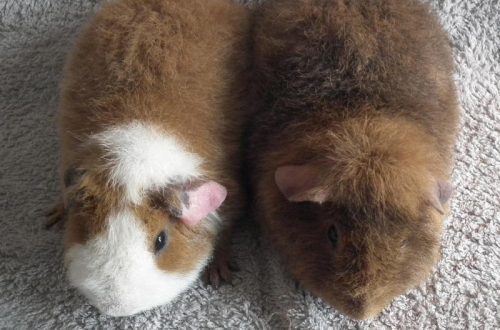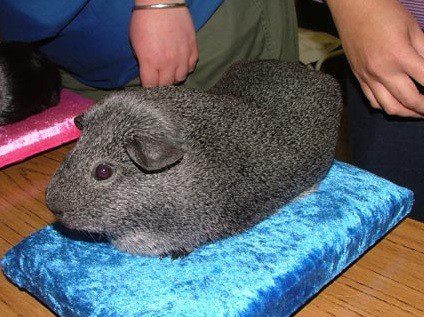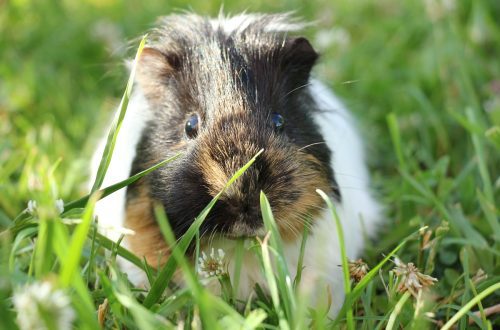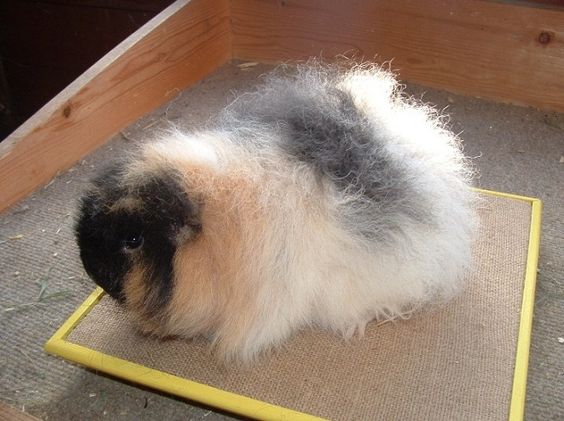
Guinea pig Swiss Teddy
Guinea pigs of the Swiss Teddy breed (Swiss Teddy Guinea Pig, or, as they are also called “CH-Teddy”) are an unusually beautiful and funny pig that you just want to pick up. From the outside, it can be confused with a ball of fluff or a dandelion. Swiss Teddies have a very unusual coat, soft, slightly curly, standing on end, tousled in all directions. They are very popular with guinea pig breeders because of their cute and unusual appearance, and today lovers of this breed can be found all over the world.
Guinea pigs of the Swiss Teddy breed (Swiss Teddy Guinea Pig, or, as they are also called “CH-Teddy”) are an unusually beautiful and funny pig that you just want to pick up. From the outside, it can be confused with a ball of fluff or a dandelion. Swiss Teddies have a very unusual coat, soft, slightly curly, standing on end, tousled in all directions. They are very popular with guinea pig breeders because of their cute and unusual appearance, and today lovers of this breed can be found all over the world.

Contents
From the history of Swiss teddies
To calculate the country of origin of these cute guinea pigs, it is not at all necessary to be Sherlock Holmes: an indication of their homeland is right in the name of the breed. Yes, it was in Switzerland that these pigs were born at the end of the last century as a result of an independent recessive mutation in the process of crossing an American Teddy with a Rex. This version of the origin looks the most plausible, although it is disputed in some sources. In a word, it is impossible to say with 100% certainty where the Swiss teddies came from. But in any case, the result was so successful that Swiss teddies soon spread throughout Europe. Thus, this breed is one of the newest breeds of guinea pigs and its history has only about 30 years. The gene of this breed is called the Swiss Teddy gene and is designated CHTg. Swiss Teddies are a fairly well-known breed, but despite this, in some countries you will not find a Swiss Teddy during the day with fire, for example, in the same UK. Although in most other European countries, these pigs are widespread. In some countries, Swiss Teddies have received official recognition, and breed standards have been developed for them.
To calculate the country of origin of these cute guinea pigs, it is not at all necessary to be Sherlock Holmes: an indication of their homeland is right in the name of the breed. Yes, it was in Switzerland that these pigs were born at the end of the last century as a result of an independent recessive mutation in the process of crossing an American Teddy with a Rex. This version of the origin looks the most plausible, although it is disputed in some sources. In a word, it is impossible to say with 100% certainty where the Swiss teddies came from. But in any case, the result was so successful that Swiss teddies soon spread throughout Europe. Thus, this breed is one of the newest breeds of guinea pigs and its history has only about 30 years. The gene of this breed is called the Swiss Teddy gene and is designated CHTg. Swiss Teddies are a fairly well-known breed, but despite this, in some countries you will not find a Swiss Teddy during the day with fire, for example, in the same UK. Although in most other European countries, these pigs are widespread. In some countries, Swiss Teddies have received official recognition, and breed standards have been developed for them.
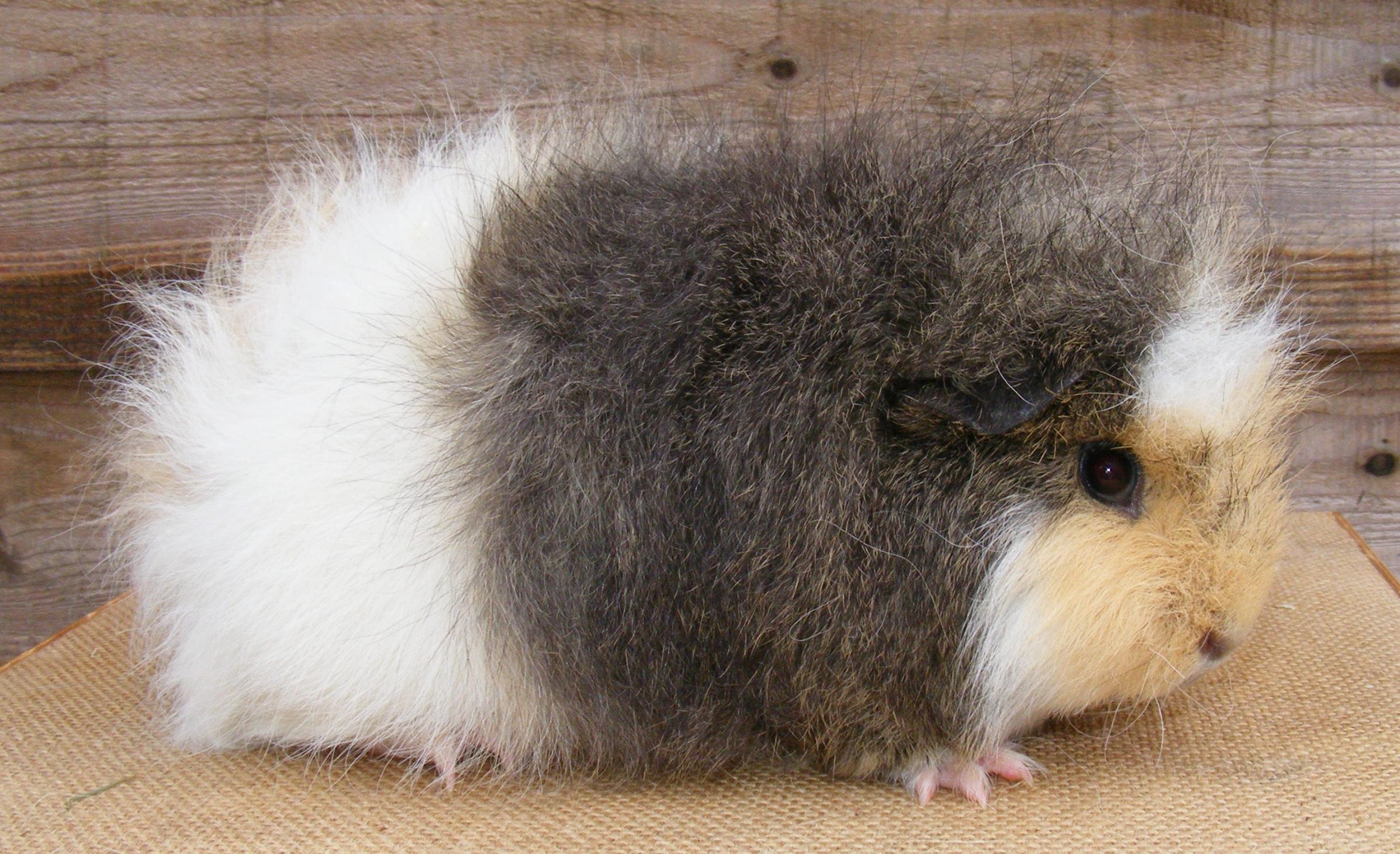
Swiss teddy features
The first comparison that comes to mind when you look at the Swiss Teddy is “ball of fluff”. Indeed, the hair of an adult teddy is quite long (about 5-8 cm) and stands, as they say, on end. The coat is thick, elastic, the hairs are dense, textured, broken, but without clearly defined curls. On the head, the hair is slightly shorter, and slightly curled on the tummy. The coat reaches its maximum length by the age of one, young Swiss Teddies usually have a shorter coat. There is still no consensus on which category (short-haired and long-haired) to classify this breed. According to the American ACBA list, the Swiss Teddy is a long-haired breed. European associations classify this breed as short-haired. The opinions of scientists, as they say, differed. The Swiss Teddy, as a rule, has a large and muscular physique, wide shoulder joints, high withers. The head is rather large and short. Swiss babies are born with a large head, which can create problems for the female, especially if she is primiparous. But then, as the head grows, it decreases in proportion to the body. The nose is more pointed than other breeds. The eyes are set far apart, large and expressive. Ears are always beautiful and neat, hanging down. Another interesting feature is the tassels growing over the ears. Not all teddies have them, but they give the pigs an even more cute and toy look. The Swiss, like the American Teddy and Rex, go through several periods of coat formation. A few months after birth, their coat may “lie down” or there may be a period of molting. Molting occurs either at an early age, or at moments of stress for health (illness, severe stress, pregnancy and feeding, etc.). At an early age, molting can begin at 1-1,5 months of age and last for several months. But then such kids, as a rule, are the best representatives of this breed. Some little Swiss skip the shedding period at an early age or go through it almost imperceptibly, but their coat in the future, as a rule, will be imperfect, too soft or uneven (not the same length in different parts of the body). So in the case of Swiss Teddies, molting in childhood is a good sign. New wool in place of the fallen out grows quite quickly. Basic requirements for Swiss Teddy wool Wool must:
- consist of “corrugated” textural hairs. Excessive straightness, as well as the presence of curls, is not welcome;
- stand on end. Lying coat is a fault;
- be of equal length throughout the body. An uneven coat is a fault;
- to be dense, elastic, dense. Soft wool is not welcome;
- have a length of 5-8 cm (dance minus a couple of centimeters). Wool shorter than 3,5 cm and longer than 10 cm is not allowed.
- grow in one direction, do not have any rosettes or ridges. Only one rosette per forehead is allowed.
The average life span is 5-8 years.
The first comparison that comes to mind when you look at the Swiss Teddy is “ball of fluff”. Indeed, the hair of an adult teddy is quite long (about 5-8 cm) and stands, as they say, on end. The coat is thick, elastic, the hairs are dense, textured, broken, but without clearly defined curls. On the head, the hair is slightly shorter, and slightly curled on the tummy. The coat reaches its maximum length by the age of one, young Swiss Teddies usually have a shorter coat. There is still no consensus on which category (short-haired and long-haired) to classify this breed. According to the American ACBA list, the Swiss Teddy is a long-haired breed. European associations classify this breed as short-haired. The opinions of scientists, as they say, differed. The Swiss Teddy, as a rule, has a large and muscular physique, wide shoulder joints, high withers. The head is rather large and short. Swiss babies are born with a large head, which can create problems for the female, especially if she is primiparous. But then, as the head grows, it decreases in proportion to the body. The nose is more pointed than other breeds. The eyes are set far apart, large and expressive. Ears are always beautiful and neat, hanging down. Another interesting feature is the tassels growing over the ears. Not all teddies have them, but they give the pigs an even more cute and toy look. The Swiss, like the American Teddy and Rex, go through several periods of coat formation. A few months after birth, their coat may “lie down” or there may be a period of molting. Molting occurs either at an early age, or at moments of stress for health (illness, severe stress, pregnancy and feeding, etc.). At an early age, molting can begin at 1-1,5 months of age and last for several months. But then such kids, as a rule, are the best representatives of this breed. Some little Swiss skip the shedding period at an early age or go through it almost imperceptibly, but their coat in the future, as a rule, will be imperfect, too soft or uneven (not the same length in different parts of the body). So in the case of Swiss Teddies, molting in childhood is a good sign. New wool in place of the fallen out grows quite quickly. Basic requirements for Swiss Teddy wool Wool must:
- consist of “corrugated” textural hairs. Excessive straightness, as well as the presence of curls, is not welcome;
- stand on end. Lying coat is a fault;
- be of equal length throughout the body. An uneven coat is a fault;
- to be dense, elastic, dense. Soft wool is not welcome;
- have a length of 5-8 cm (dance minus a couple of centimeters). Wool shorter than 3,5 cm and longer than 10 cm is not allowed.
- grow in one direction, do not have any rosettes or ridges. Only one rosette per forehead is allowed.
The average life span is 5-8 years.
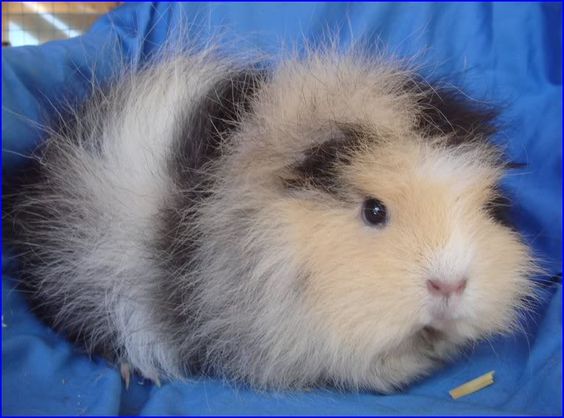
Maintenance and care
Like other guinea pigs with short hair, Swiss Teddies are very unpretentious animals in terms of care. All care for the coat of such a pet comes down to weekly or even monthly cleaning of the coat. You just need to check that rubbish or pieces of hay are not tangled in the fur and comb it with a special comb. You can buy a special comb for wool at a pet store, or you can use a comb for babies from a children’s store. The only period when the coat of the Swiss will require additional care is the molting period. In shedding gilts, hair can become matted, especially in the armpits and on the outside of the thighs. It is very difficult to unravel and comb out such tangles, few pigs will let you do this. Therefore, in order not to torment yourself and your pet, if a tangle has happened, it is better to cut it carefully. And in order to avoid their formation during the molting period, it is necessary to provide your pet with regular and thorough combing. The cage for the Swiss should be spacious and large, as guinea pigs need a lot of space to live. (LINK) When it comes to nutrition, the rules are exactly the same as when feeding other guinea pigs. pet for kids.
Like other guinea pigs with short hair, Swiss Teddies are very unpretentious animals in terms of care. All care for the coat of such a pet comes down to weekly or even monthly cleaning of the coat. You just need to check that rubbish or pieces of hay are not tangled in the fur and comb it with a special comb. You can buy a special comb for wool at a pet store, or you can use a comb for babies from a children’s store. The only period when the coat of the Swiss will require additional care is the molting period. In shedding gilts, hair can become matted, especially in the armpits and on the outside of the thighs. It is very difficult to unravel and comb out such tangles, few pigs will let you do this. Therefore, in order not to torment yourself and your pet, if a tangle has happened, it is better to cut it carefully. And in order to avoid their formation during the molting period, it is necessary to provide your pet with regular and thorough combing. The cage for the Swiss should be spacious and large, as guinea pigs need a lot of space to live. (LINK) When it comes to nutrition, the rules are exactly the same as when feeding other guinea pigs. pet for kids.
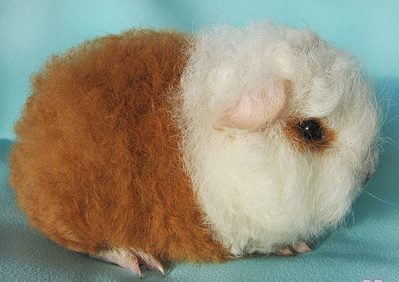
swiss teddy color
Pigs of this breed can be of a wide variety of colors, both monophonic and multi-colored. Rare combinations are allowed and even welcomed.
Pigs of this breed can be of a wide variety of colors, both monophonic and multi-colored. Rare combinations are allowed and even welcomed.
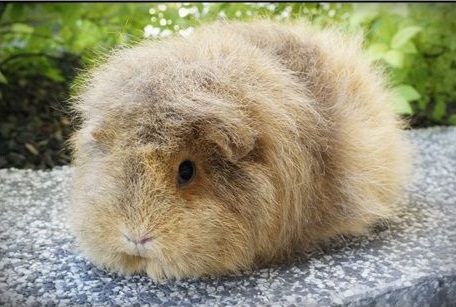
Breeding swiss teddy
Breeding of this breed is only possible for experienced breeders, since it is they who will be able to do all the necessary factors to obtain really high-quality offspring of a show or breed class. Let’s start with the fact that the Swiss cannot be crossed with pigs of other breeds. Good offspring will turn out only about the mating of two Swiss. When crossed with alpacas, Peruvian or Abyssinian pigs, the coat of the offspring will have invalid rosettes or uneven coat. When crossed with the American Teddy, the coat of the offspring will lose its special gene responsible for the hard coat. But even with the selection of two excellent Swiss, you can get very different offspring, even within the same litter. All animals with irregular hair, with too short or long hair, it is better not to allow breeding, if you plan to keep the purity of the breed and achieve the best results.
Breeding of this breed is only possible for experienced breeders, since it is they who will be able to do all the necessary factors to obtain really high-quality offspring of a show or breed class. Let’s start with the fact that the Swiss cannot be crossed with pigs of other breeds. Good offspring will turn out only about the mating of two Swiss. When crossed with alpacas, Peruvian or Abyssinian pigs, the coat of the offspring will have invalid rosettes or uneven coat. When crossed with the American Teddy, the coat of the offspring will lose its special gene responsible for the hard coat. But even with the selection of two excellent Swiss, you can get very different offspring, even within the same litter. All animals with irregular hair, with too short or long hair, it is better not to allow breeding, if you plan to keep the purity of the breed and achieve the best results.



